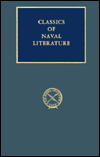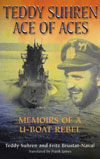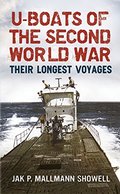Raiders of the Deep
Thomas, Lowell
1995, United States Naval Inst.
ISBN 1557507228
363 pages, 51 b&w photos
| Type. | Oral History of World War I |
| Pros. | Exciting and informative |
| Cons. | Nothing major |
| Rating. |  |
 This book presents the exploits of World War I U-boats in an exciting adventure-narrative style. The author, a war correspondent in the Great War and a journalist, radio commentator, and prolific writer for decades afterward, specialized in captivating his audiences with the dramatic, the thrilling, and the mysterious. This book is pure entertainment, and as such cannot be considered 100% historically accurate. Nevertheless, it is excellent in its vivid portrayal of this first generation of U-boat men.
This book presents the exploits of World War I U-boats in an exciting adventure-narrative style. The author, a war correspondent in the Great War and a journalist, radio commentator, and prolific writer for decades afterward, specialized in captivating his audiences with the dramatic, the thrilling, and the mysterious. This book is pure entertainment, and as such cannot be considered 100% historically accurate. Nevertheless, it is excellent in its vivid portrayal of this first generation of U-boat men.
The reader familiar with World War II U-boat warfare will be immediately impressed by how dissimilar conditions were in the first world conflict. The atmosphere of improvisation, risk and daring, and optimism conveyed in this volume is in strong contrast to the grimness and calculated efficiency often associated with the U-boat war 1939-1945. Obviously, many factors contributed to the relative pessimism with which Germany embarked on naval warfare in September 1939, factors which did not exist to trouble the sailor of 1914. But this optimism also stemmed partly from the relative impunity with which the World War I U-boats carried on their work. Their successes were greater because anti-submarine warfare was slow to develop, and the greatest threats to a U-boat for most of this war were minefields, Q-ships, and, at the start, their own volatile fuels and fragile construction.
An additional dissimilarity is evident in the fact that naval action was still largely governed by the Prize Rules, and was punctuated by periods when Germany voluntarily placed restrictions on her use of submarines. However, despite these hobbles, during the course of the war the U-boats managed to send a vast amount of tonnage to the bottom of the sea, achieving a much higher rate of sinkings per boat than that attained a quarter century later. As one example, World War I's top tonnage ace, Lothar von Arnauld de la Perière, sank 54 vessels on a single mission with U-35, for a total of 91,000 tons. Arnauld's official wartime total was 454,000 tons, compared to his World War II counterpart Otto Kretschmer's 274,386 tons.
In order to collect the material for his book, the author made many journeys to Germany in the decade following the Armistice to interview the most famous commanders who had survived the conflict, as well as close associates of those who had not. One of the most interesting aspects of the book is that it purports to demonstrate the seamless integration of former aces, officers, and crewmen into regular, and usually non-naval, society. The economic privations of postwar Germany do not surface in the narrative. Instead, the oral histories are collected in various middle and upper class surroundings, naval clubs and business offices, estates and residences. The question of whether former seafarers were embittered at having their naval careers snatched from them by the Treaty of Versailles is barely touched. The author's concern is wartime adventure, not contemporary social commentary or political analysis.
That said, this is a highly fascinating collection of the highlights of U-boat warfare, told mainly in the first person. Especially interesting are the tales of those boats sent out on patrol in 1914 which were already obsolete and plagued by technological shortcomings, dangerous to their own crews, and yet quite effective at their task. Johannes Spieß, who sailed with Kptlt. Otto Weddigen as his first officer (I WO), describes how in 1914 their kerosene-powered U-9 sank the Aboukir, the Hogue, and the Cressy one after the other in the course of slightly over an hour. The landmark first sinking of a merchant ship by a U-boat (U-17, Kptlt. Feldkirchner) is recounted, as well as the first sinking of any vessel in wartime by a German submarine - the Pathfinder, sunk by Otto Hersing, former ace who after the war turned to potato farming. Of course the story of the Lusitania is told, by watch officer Rudolph Zentner, but his narrative additionally provides other quite interesting glimpses of life aboard U-20 under Walther Schwieger, including the on-board celebration of Christmas in 1914, and the U-boat's family of canine mascots.
Many other tales of great deeds, narrow escapes, death and survival are recounted here. The view from the other side of the conflict is represented as well, including the story of Weddigen's last battle described by a British naval officer, and a survivor's narrative of the sinking of the Lusitania. In sum, this is an entertaining and informative overview of the highlights of World War I U-boat warfare.
Review written by Tonya Allen.
Published on 4 Feb 2000.
This title is highly recommended.
Purchase information: (info) Get Raiders of the Deep now at amazon.co.uk
Get Raiders of the Deep now at amazon.co.uk
Return to our main review page.



